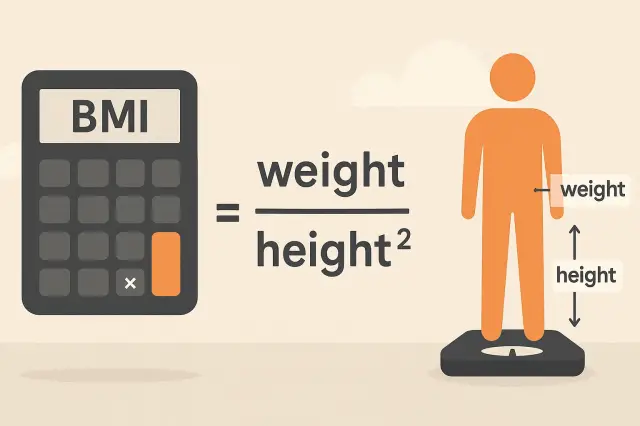The Body Mass Index (BMI) is a widely used indicator to evaluate whether a person’s weight is within a healthy range for their height. Our BMI Calculator provides a quick and reliable way to check your body mass index, helping you better understand your overall health profile.
This tool is especially useful for individuals monitoring their weight, health professionals guiding patients, and fitness enthusiasts seeking clear benchmarks for progress.
How the BMI Calculator Works
The BMI formula relates your weight and height to give a single value that categorizes you into underweight, normal weight, overweight, or obese.
The formula is:
BMI = Weight (kg) ÷ Height (m²)
For example:
-
Weight = 70 kg
-
Height = 1.75 m
-
BMI = 70 ÷ (1.75 × 1.75) = 22.86 → Normal range
BMI Categories
The World Health Organization (WHO) defines BMI ranges as follows:
| BMI Value | Category |
|---|---|
| Less than 18.5 | Underweight |
| 18.5 – 24.9 | Normal weight |
| 25 – 29.9 | Overweight |
| 30 and above | Obesity |
These ranges are general guidelines and may vary depending on individual factors such as age, sex, and muscle mass.
Steps to Use the BMI Calculator
-
Go to the BMI Calculator.
-
Enter your weight in kilograms or pounds.
-
Enter your height in centimeters or feet/inches.
-
Click calculate to see your BMI score and category.
The tool gives you instant results with clear interpretation, so you can better understand your health status.
Real-Life Examples
Example 1 Normal BMI
-
Weight: 68 kg
-
Height: 1.72 m
-
Result: BMI = 22.98 → Normal weight
Example 2 Overweight
-
Weight: 85 kg
-
Height: 1.70 m
-
Result: BMI = 29.41 → Overweight
Example 3 Underweight
-
Weight: 48 kg
-
Height: 1.65 m
-
Result: BMI = 17.63 → Underweight
These cases illustrate how small changes in height or weight can place someone in a different BMI category.
Why the BMI Calculator Is Useful
-
Quick evaluation Provides immediate feedback on weight status.
-
Accessibility Can be used by anyone, anywhere, without special equipment.
-
Health awareness Encourages people to monitor lifestyle choices.
-
Comparisons Helps track progress in diet or fitness programs.
Limitations of BMI
While BMI is helpful, it does not distinguish between fat and muscle. For example, an athlete with high muscle mass may be categorized as overweight even if they have low body fat.
Practical Tips When Using the BMI Calculator
-
Use it as a starting point, not a diagnosis.
-
Combine BMI with other indicators like waist circumference and lifestyle habits.
-
Track your results regularly to spot trends.
-
Consult a doctor or nutritionist if your BMI is outside the normal range.




